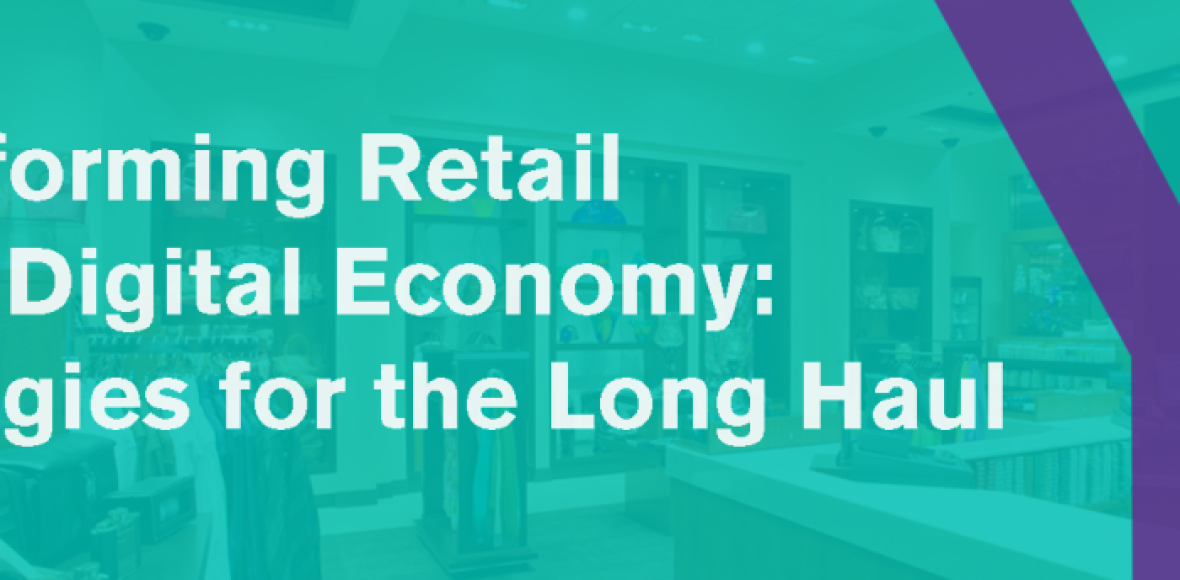
Why retailers of all sizes need to embrace e-commerce, adopt an omni-channel strategy, consumer analytics and customer loyalty initiatives to remain competitive.
This weekend all eyes are looking the annual Black Friday(November 24, 2017) and Cyber Monday (November 27) – two U.S.-originated shopping phenomenon that, arguably, may have inspired Jack Ma to create Singles’ Day shopping spree in China.
In the media there is anticipation that the 2017 Black Friday will become the biggest shopping event of the year. Setting aside semantics and the “whose stuff is bigger?” the real focus for businesses is the recognition that, as a region, Asia Pacific is the new market that brands need to focus their energy on and, if they are serious about their future, to plan for the long haul – a view shared by Lily Varon (photo right), an analyst for Forrester.
[vc_empty_space height=”24″ image_repeat=”no-repeat”][vc_column_text]In the report “Ecommerce Trends And Outlook for Asia Pacific” Varon noted that total online retail revenues from just five markets in Asia Pacific – Australia, China, Japan, India and South Korea – surpassed the combined online sales in the US and all of Western Europe. She forecast that by 2021, total online retail revenues in the five markets will reach US$1.4 trillion, over 61% of 2016 levels which stood at US$862 billion.[/vc_column_text][vc_empty_space height=”24″ image_repeat=”no-repeat”][vc_column_text]
Varon observed that in Asia Pacific web-only retailers dominate the online retailing business, with substantial investments being put into omni-channel and mobile retail initiatives. She also noted that a growing number of global brands are starting to sell direct to consumers in these markets, with mobile as a key driver of transactions.
[/vc_column_text][vc_empty_space height=”24″ image_repeat=”no-repeat”][vc_column_text]
How has e-commerce changed the goings on (processes) of traditional retail supply chains?
[/vc_column_text][vc_empty_space height=”24″ image_repeat=”no-repeat”][vc_column_text]
Marc Dragon: Traditional retail supply chains have been fundamentally built around reducing stock-outs at the store-level. While more mature firms have been able to layer more advanced capabilities to optimize inventory visibility, accuracy and throughput across their business-to-business (B2B) supply chain, the advent of e-commerce has increased the expectation of service levels altogether.
[/vc_column_text][vc_empty_space height=”34″ image_repeat=”no-repeat”][vc_column_text]
To survive and meet these service levels, retailers must be able to deliver large volumes of orders quickly and accurately within a specific and/or narrow delivery time window, which traditional retail supply chains were never built or equipped to be able to do. Furthermore, an equally strong reverse logistics management process needs to be in place to manage a corresponding volume of returned, exchanged and damaged goods.
[/vc_column_text][vc_empty_space height=”34″ image_repeat=”no-repeat”][vc_column_text]
The science and art of managing the service levels expectation of the consumers, retailers, consumer products companies and logistics service products across the entire chain thus drives the overall supply chain transformation and change. The execution of which encompasses everything from rethinking logistics and transportation to build up capabilities to leverage on the sharing economy, warehousing to cater to picking and packing products at the individual item-level as well as an increased reliance on data analytics to accurately predict which products are likely to sell on a store-by-store basis and multi-modal optimization in unlocking, faster, more cost-effective means of moving goods cross-border from fulfilment centers direct to consumers.
[/vc_column_text][vc_empty_space height=”34″ image_repeat=”no-repeat”][vc_column_text]
With the expansion of regional brands like Alibaba and entry of global brands like Amazon, how are retailers expanding to compete in an increasingly online/mobile-first consumer base in Asia?
[/vc_column_text][vc_empty_space height=”34″ image_repeat=”no-repeat”][vc_column_text]
Marc Dragon: Brands such as Alibaba and Amazon are capitalizing on the rise of hyper-connected shoppers in Asia who are constantly connected to the internet and embrace mobile shopping. According to a Southeast Asia Mobile Consumer survey conducted by Deloitte, browsing shopping websites and applications is the most popular purchasing activity on mobile phones with Indonesia (36%), Singapore (31%), and Malaysia (31%) leading the region.
[/vc_column_text][vc_empty_space height=”34″ image_repeat=”no-repeat”][vc_column_text]
The large e-commerce brands understand that Asia as a market is a very diverse, heterogeneous region and therefore they need to fine-tune their approach with a differentiated strategy for each of the markets they compete in, especially within the ASEAN region.
[/vc_column_text][vc_empty_space height=”34″ image_repeat=”no-repeat”][vc_column_text]
To remain competitive, retailers must understand that it is not necessarily a question of e-commerce vs. traditional brick & mortar but instead about going back to basics and understanding the consumer – how they behave (and will behave) – and reach each of them with customized experiences that are tailor-made based on each and every consumers’ unique buying behavior and expectations of service.
[/vc_column_text][vc_empty_space height=”34″ image_repeat=”no-repeat”][vc_column_text]
For retailers, the right approach will require careful consideration to some or all of the following concepts: omni-channel (O2O), consumer analytics and customer loyalty initiatives. Retailers will need to invest in the ability to collect and analyses customer data and then use the critical insights generated through analytics to determine optimized promotions and effective marketing activities to better cater to the preferences of their customers.
[/vc_column_text][vc_empty_space height=”34″ image_repeat=”no-repeat”][vc_column_text]
To compete with industry giants such as Alibaba and Amazon, it is essential for retailers to not only invest in developing these capabilities but to also differentiate themselves through their products, services, customer experience or engagement strategies.
[/vc_column_text][vc_empty_space height=”34″ image_repeat=”no-repeat”][vc_column_text]
Do you see a difference between the customer expectations of those going online/mobile versus those that shop at physical stores?
[/vc_column_text][vc_empty_space height=”34″ image_repeat=”no-repeat”][vc_column_text]
Marc Dragon: Consumers who choose to shop online or on mobile often value convenience and lower prices above all else. This is echoed in a retail study by PwC that highlighted that the top three reasons why consumers prefer to shop online include lower prices and better deals than in-store (56%), the ability to shop at any time of the day (46%), and the convenience of having orders delivered (40%). The same study shared that consumers who prefer to shop in-store are those who prefer to physically try the product (60%), and to get the product immediately upon point of purchase (53%).
[/vc_column_text][vc_empty_space height=”34″ image_repeat=”no-repeat”][vc_column_text]
To meet varying customer expectations, retailers can create an omni-channel experience to provide a consistent, unique and brand-defining shopping experience across all channels. The influx of technology can also be seen by traditional retailer as an opportunity for them to create a unique in-store experience that keeps customers coming back. Technologies that focus on Customer Relationship Management (CRM) & Loyalty Program enables retailers to create personalized and targeted marketing to more effectively engage customers, which in turn builds loyalty and revenue growth.
[/vc_column_text][vc_empty_space height=”34″ image_repeat=”no-repeat”][vc_column_text]
For smaller retailers that have no plans to go online, is there a future for them given that as you say “omni-channel is important”?
[/vc_column_text][vc_empty_space height=”34″ image_repeat=”no-repeat”][vc_column_text]
Marc Dragon: Internet usage in Asia is predicted to triple to 600 million by 2020, making it inevitable for smaller retailers to plan on going online to reach this pool of consumers. Moreover, a report by eMarketer highlighted that with an estimated 924.8 million people in the region predicted to make at least one digital purchase in 2017, this growing familiarity with e-commerce platforms is expected to encourage online purchasing.
[/vc_column_text][vc_empty_space height=”34″ image_repeat=”no-repeat”][vc_column_text]
Smaller retailers should see that the availability of e-commerce and omni-channel technologies as an opportunity for their business to remain competitive or risk being left behind in today’s rapidly evolving e-commerce world. These technologies enable retailers to create better customer experiences, while streamlining processes to improve productivity and efficiency within the business.
[/vc_column_text][vc_empty_space height=”34″ image_repeat=”no-repeat”][vc_column_text]
What can Chinese e-commerce operators learn from other e-commerce players in Southeast Asia and vice-versa?
[/vc_column_text][vc_empty_space height=”34″ image_repeat=”no-repeat”][vc_column_text]
Marc Dragon: China is currently the world’s largest e-commerce market and has been at the forefront of adopting the latest retail technologies thus setting the benchmark in global retailing. The country’s e-commerce giants have set a new norm for the retail industry by pioneering the use of data analytics and retail technologies as well as heavily investing in improvements towards their supply chains. This creates an omni-channel experience to provide consumers with a seamless journey between online and offline channels.
[/vc_column_text][vc_empty_space height=”34″ image_repeat=”no-repeat”][vc_column_text]
The Chinese e-commerce operations have been nimble, shrewd and calculated in their approach to entering the ASEAN market. This is characterized by a preference for mergers and acquisitions (M&As) activities be they straight out acquisitions or holding equity stakes in local operators with a view to extend those stakes as the individual business models prove themselves.
[/vc_column_text][vc_empty_space height=”34″ image_repeat=”no-repeat”][vc_column_text]
The most vital learning point is that ASEAN is a very diverse region where a “one size fits all” approach does not and will not work. Logistics, payments and customer loyalty are key areas where the players that understand and deliver based on the unique behaviors and expectations of consumers in different country markets will ultimately succeed. Naiise, a Singapore-based retailer specializing in design products, is a leading player successfully deploying an omni-channel strategy that blends logistics, payments and customer loyalty to provide a winning customer experience for their customers – be it online or in-store.
[/vc_column_text][vc_empty_space height=”34″ image_repeat=”no-repeat”][vc_column_text]
Leading e-commerce players have been fast to adopt data analytics to gain a multi-dimensional understanding of consumers to secure a competitive advantage in today’s rapidly evolving e-commerce market. This is echoed in a study by KPMG that highlighted that 30% of Chinese retailers are using data analytics today and that number will almost double to 59% over the next two years. The same study also highlighted that 38% of these companies are using data analytics to improve coordination with their supply chain partners to gain overall visibility and insights across the entire supply chain.
[/vc_column_text][vc_empty_space height=”34″ image_repeat=”no-repeat”][vc_column_text]
Originally published:
https://www.enterpriseinnovation.net/article/transforming-retail-digital-economy-strategies-long-haul-878890313/page/0/2
[/vc_column_text][vc_empty_space height=”34″ image_repeat=”no-repeat”][vc_row row_type=”row” use_row_as_full_screen_section=”no” type=”full_width” text_align=”left” box_shadow_on_row=”no”][vc_column][/vc_column][/vc_row]










